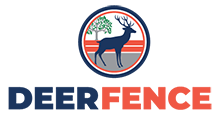Bears In Summertime
Posted on July 21 2020
August is when bear sightings occur most frequently by outdoor enthusiasts as these large animals wander in search of food. While they may look slow-moving, they can actually run over 30 mph; climb and leap small vertical jumps (although not too common to see).
Growers that have bears lurking around the area will want to protect their crops from the threat of bear damage. Here's what gardeners and farmers must know about bear movement in summer:
American black bears are omnivorous eaters and enjoy eating plants, fruits, nuts, insects, honey, salmon, small mammals and carrion. In northern regions, they eat spawning salmon. Black bears will also occasionally kill young deer or moose calves.
Their cousin, the Brown Bear, roams U.S. states including Washington, Montana, Wyoming, and Alaska. Like Black Bears, they are omnivorous; and they will eat grasses, fungi, berries, roots, seeds, honey, fish, elk and deer.
Bears are solitary, but territorial animals; and like deer, once they establish a territory, they will not leave unless they are forced out. Because of their size, bears need to eat a lot in the summer and fall seasons in order to make it through the winter when they go into a deep sleep (but not a true hibernation). For bear deterrence, the best approach by growers is to install electric fencing and electric bear nets; as plastic fencing and some types of metal fencing, are too weak to block bear browsing plants.
Installing an electric fence is easy and is the best course of action for growers to take to control bear damage to plants.
